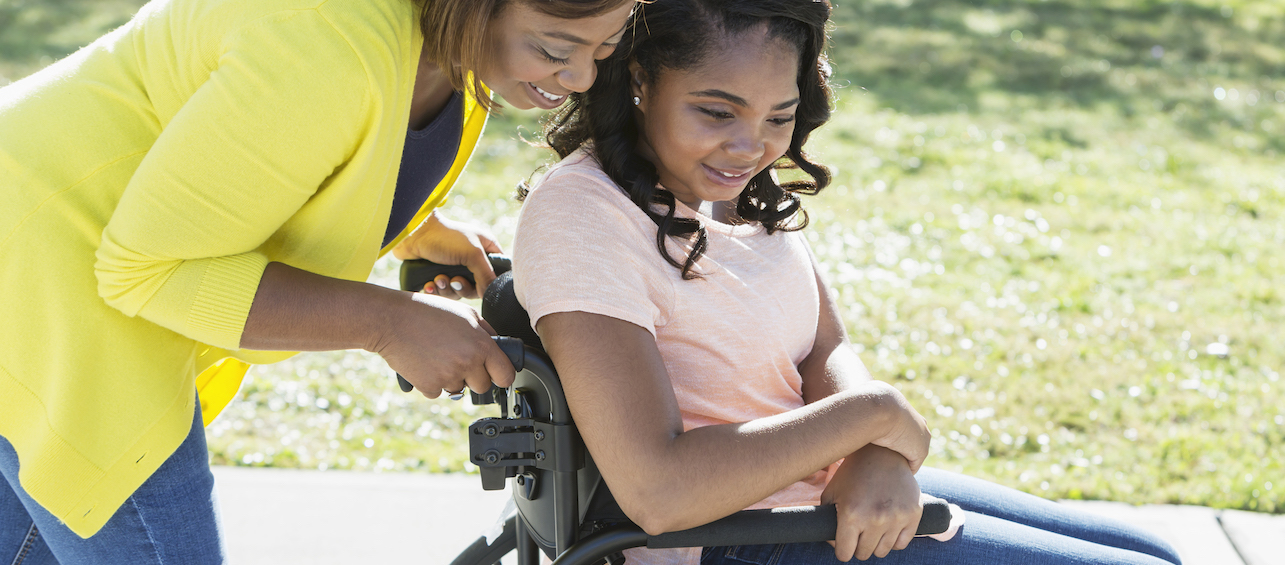Young girls usually get their first period between ages 10 and 15. This age range is typically the same for teens and tweens with mental and/or physical disabilities. And while periods are the same, how a child with disabilities might react to a period can be very different.
For kids with special needs, we see a wide range of concerns from families. For some, it’s the amount of blood or how the blood will feel. Others are concerned about hygiene and how easy or difficult it might be to routinely change pads or tampons. Still others wonder how their child will manage possible cramping or other period symptoms.
Here in our Division of Pediatric and Adolescent Gynecology, we have helped families through all of these scenarios and more. Here are some tips for making this important stage in life go as smoothly as possible for families of children with special needs.
Know your child’s needs and concerns
Think about the aspects of period management that will worry you and your child the most. For someone with a seizure disorder, there might be concern about seizures increasing around the time of the period. Someone with sensory issues may be put off by the sensation of blood in their underwear. For a child with severe developmental disabilities, a family could be interested in menstrual suppression to stop or lighten the bleeding each month.
When you know what the primary concerns are, you’ll be better equipped to have conversations with your child and/or with her doctor so you can find solutions that will work for everyone.
Start the conversation early
The first period typically shows up between 1-1/2 to 3 years after breast buds develop. Use breast development as a guide for starting a discussion with your child about the first period.
One great way to start conversations is through everyday examples like buying pads or tampons at the store, having an older child or cousin start their period, or seeing something related on TV. These conversation starters can normalize talking about periods.
It can help to use pictures or pictograms when explaining what happens with periods, what period products are, and how to use them.
Be matter of fact when talking to your child about periods
- Reassure her about body changes. “When your body changes from a little kid body to a grown up body, these changes will happen.”
- Reassure her about blood. “When you get your period, blood comes out of your vagina. That is okay.”
- Introduce sanitary products. “When you get your period, you should wear a pad to keep from staining your clothes.”
- Talk about public versus private conversations. Bring up where, when and who your daughter should talk to about her period. Communicating with your child’s school and other caregivers can allow for consistent messages.
Your child is going to be looking to you for context and reassurance about all of these changes going on in their body. Even if you feel uncomfortable talking about periods, remember that your child might not feel the same way.
Plan ahead
- Practice putting pads in underwear before it’s needed. Show your child how to place them properly, and how to dispose of them.
- Designate a spot in your home for period products and purchase supplies before they’re needed.
- Create an on-the-go bag with period products.
- Discuss tampon use, and decide if these might work well for your family. If so, show your child how they work ahead of time. Start with a small, petal-tipped tampon. Using a little bit of water-based lubricant may be helpful. Sometimes attempting to insert a tampon when not on a period can be uncomfortable, so plan ahead for when to try.
Other helpful hints
- Pair pad changes with other toilet routines, such as urinating or passing a catheter for urine.
- Consider purchasing period underwear, which can be especially helpful for girls who have trouble using and changing pads or tampons. They also come in black, which is great for girls who don’t like the sight of blood.
- If your child hasn’t started their first period by age 15, talk with your child’s doctor as that could be a sign of delayed puberty.
In addition to your child’s disability, a variety of other factors can also impact periods, including genetics, weight, chronic illness, certain medications and more. Talking with your child’s doctor before periods start can help you and your daughter have a better idea of what to expect and be prepared with strategies to manage them. Rest assured that there are many options available to help your family through this milestone in your daughter’s life.
Resources to consider
- Books: The Care and Keeping of You (from the American Girl Library) and What’s Happening to Ellie? by Kate E. Reynolds and Jonathon Powell
- Free online resource: Healthy Bodies from the Vanderbilt Kennedy Center
- Pictograms or Picture Exchange Communication System (PECS): You can find these online for free or a few dollars. Search for “period flash cards pictograms.”
Want to learn more?
If you’re interested in hearing more about defeating period problems in girls with disabilities, I recommend watching the videos below. In them, one of our nurse practitioners Lisa Y. Reebals, MSN, APRN, CPNP, and I go even further in-depth about menstrual management for kids with special needs and their caregivers. I hope you find this information helpful.





